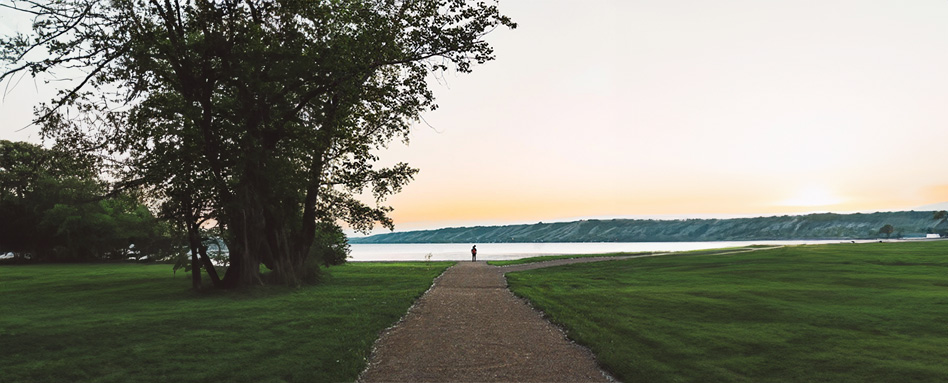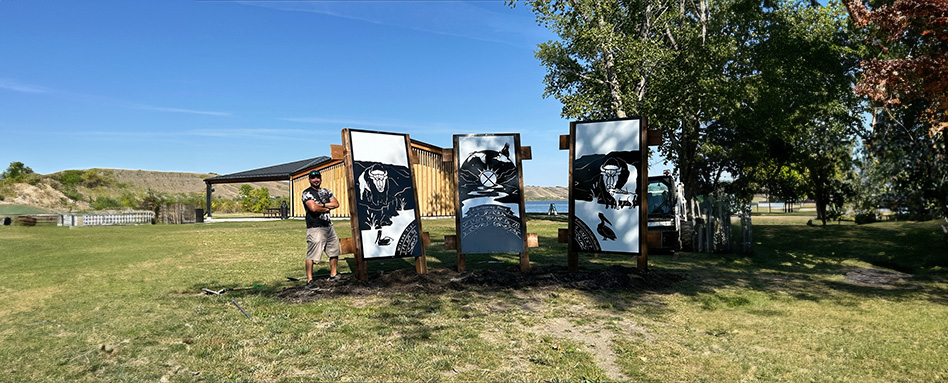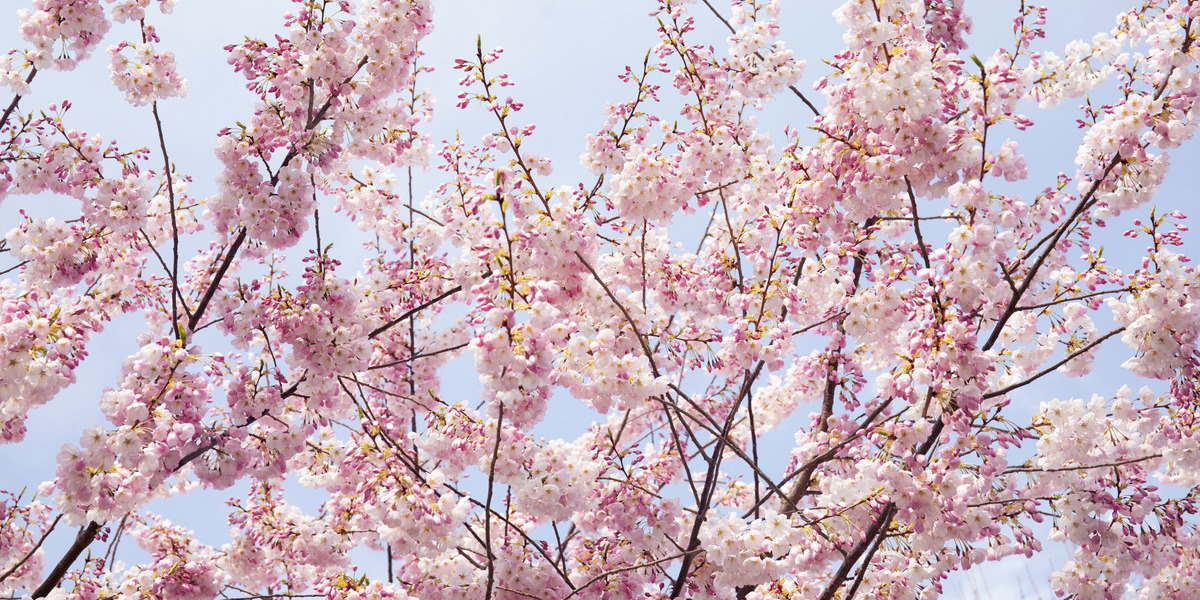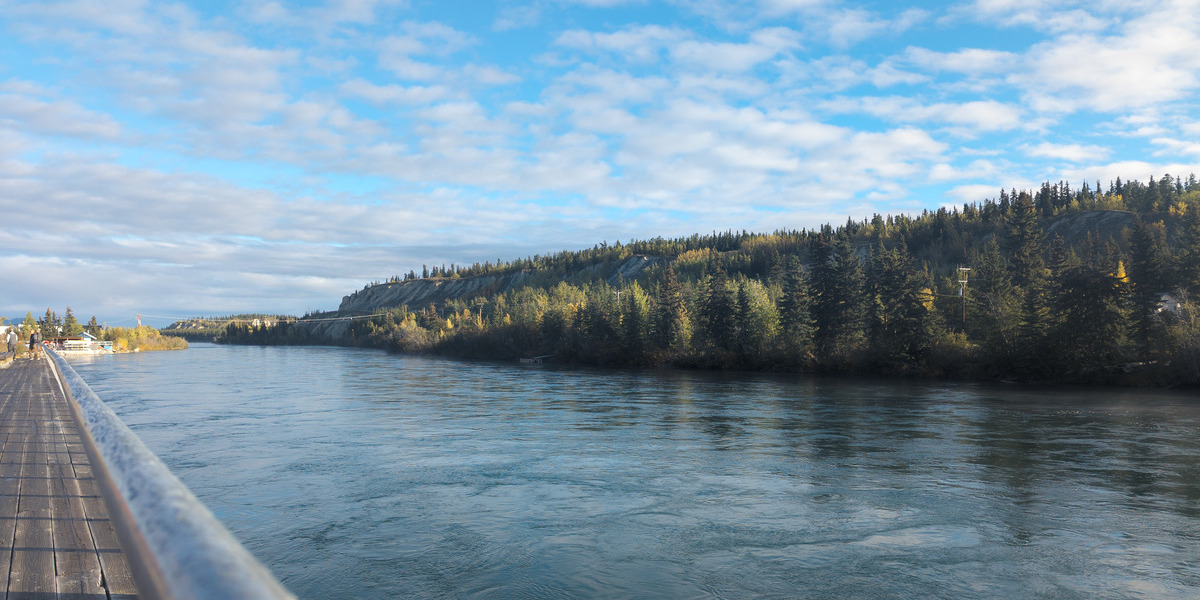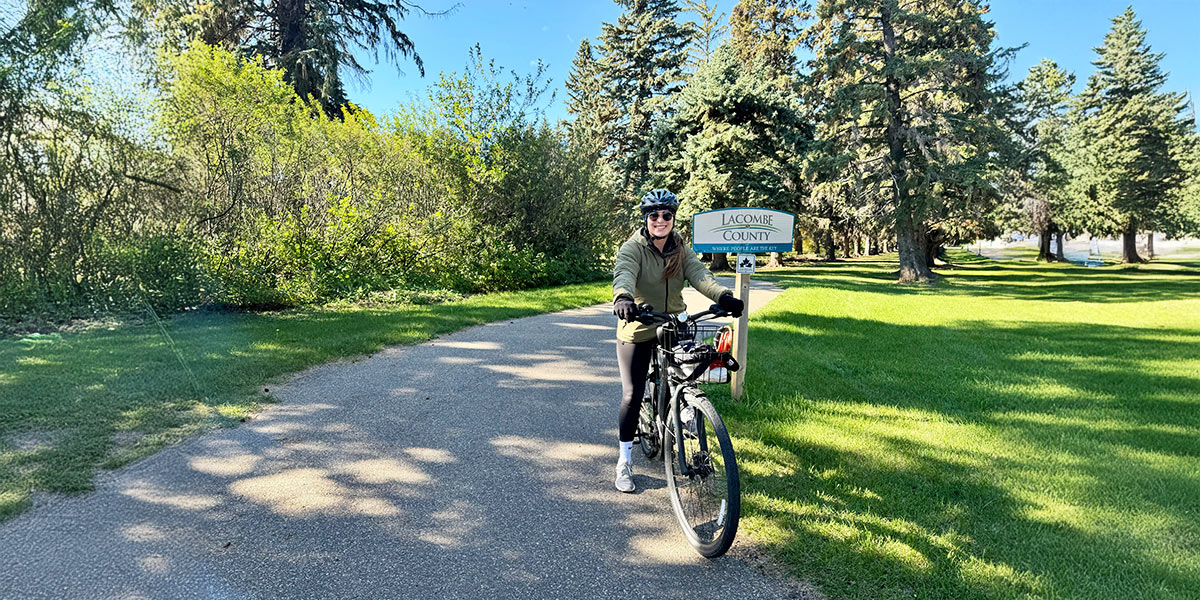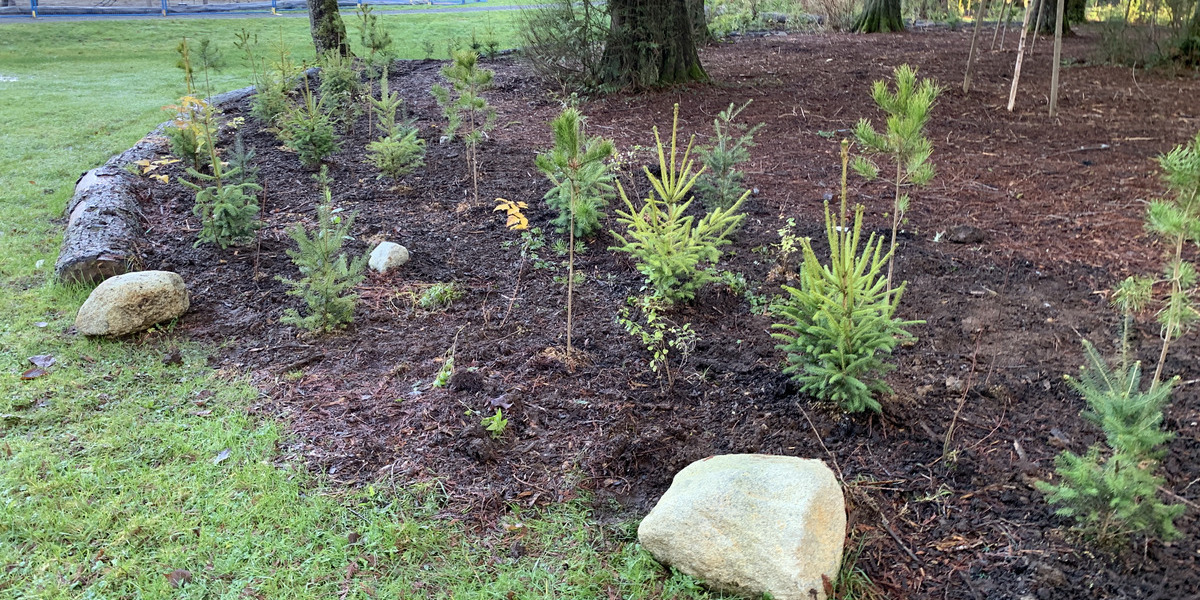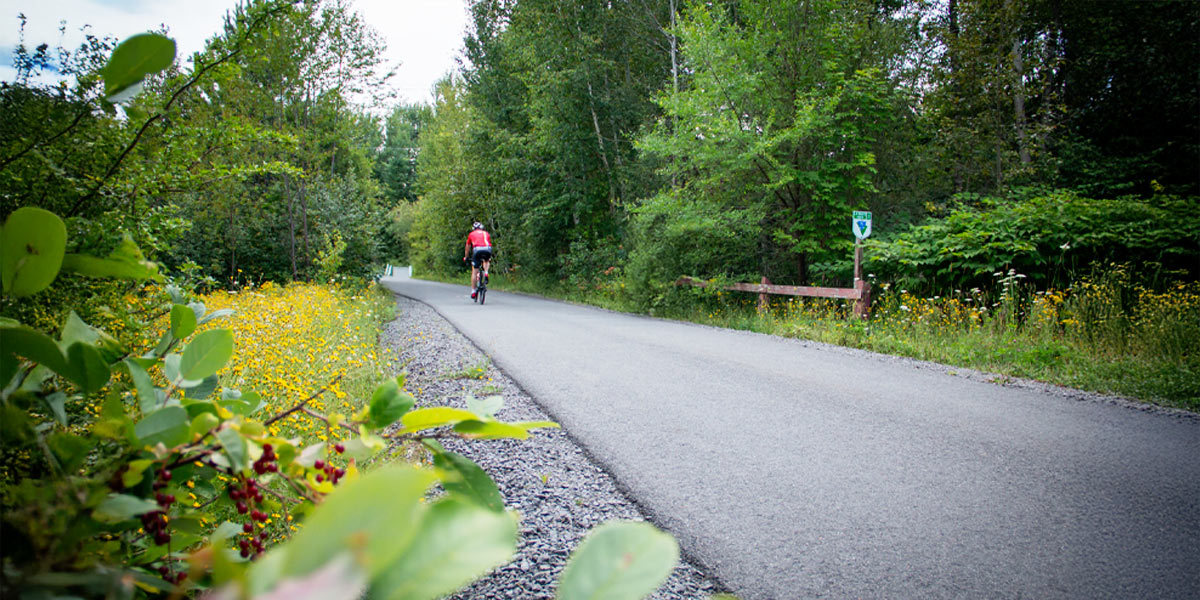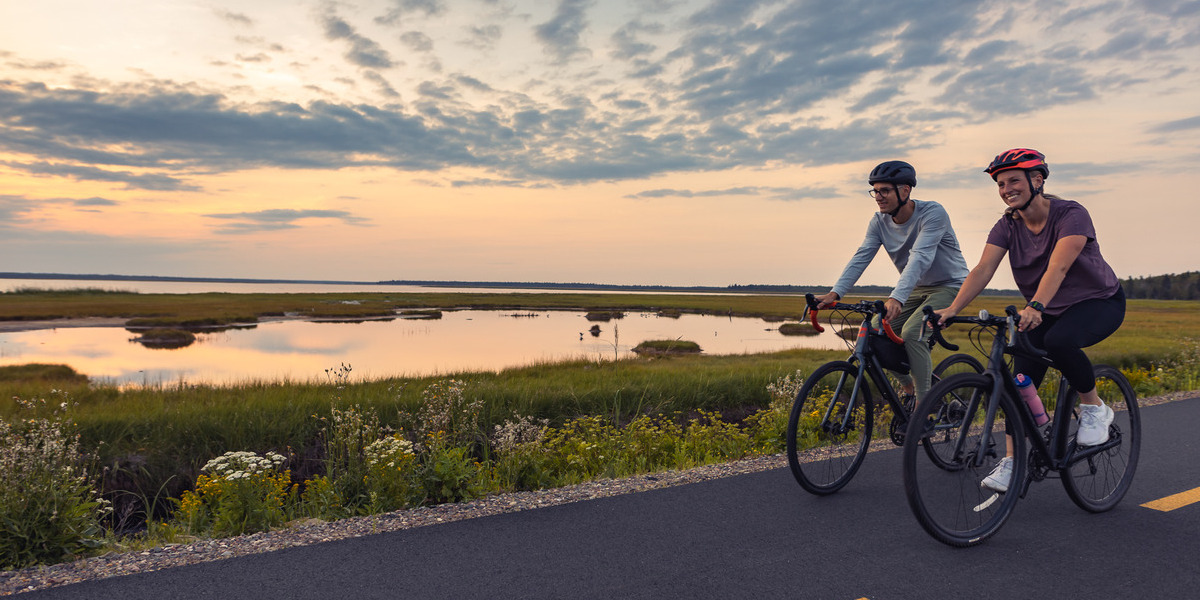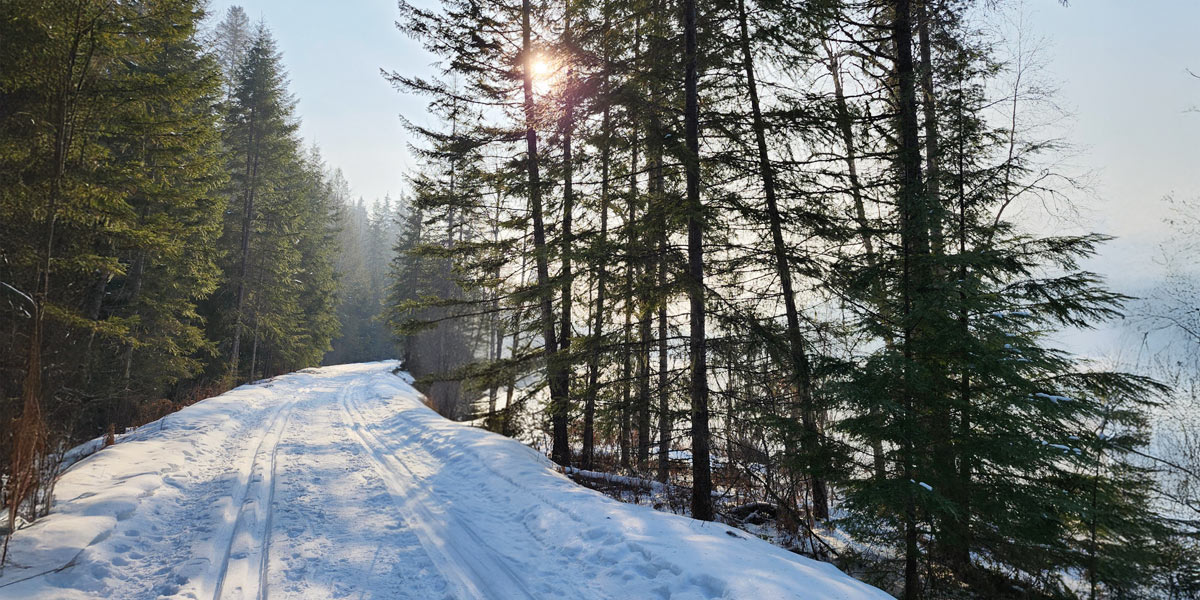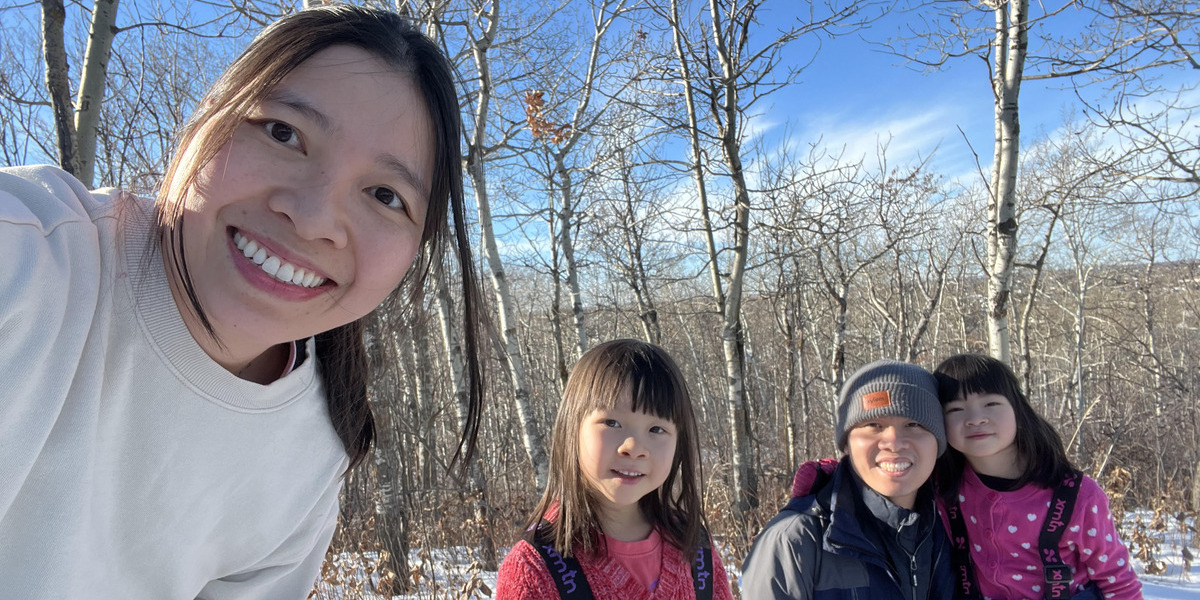A Newly Installed Art Installation in Echo Valley Provincial Park Showcases the Region’s Indigenous Culture and Language
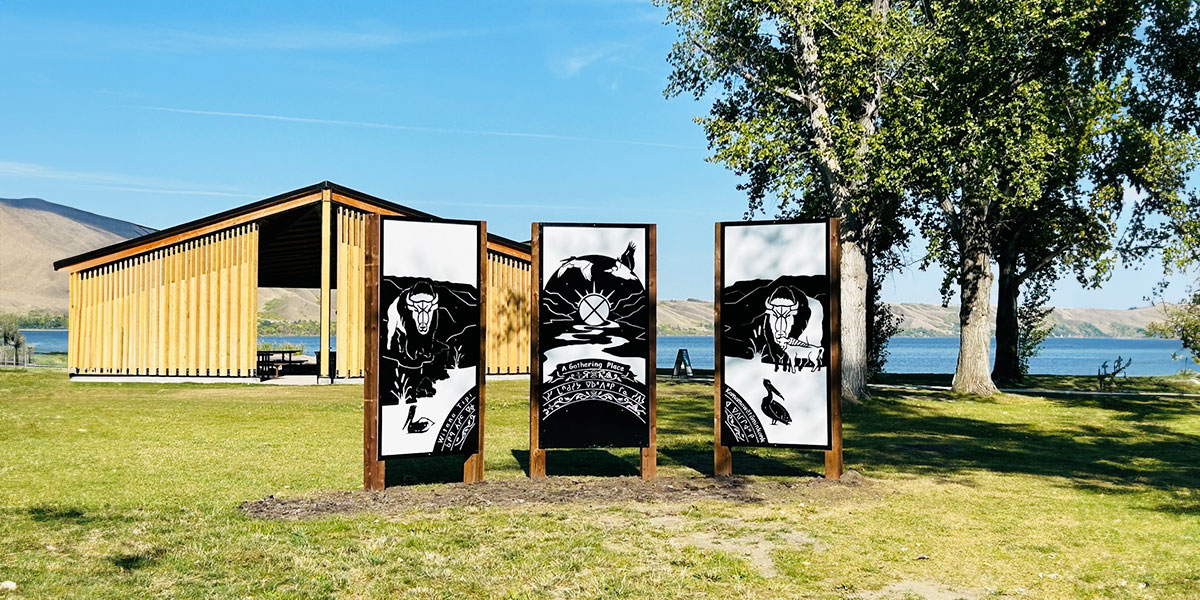
In September 2024, three steel art panels were installed at the day use area at Echo Valley Provincial Park, Saskatchewan, along the Trans Canada Trail.
This project was funded in part by Trans Canada Trail’s Indigenous Communities funding stream, which provides grants to support the development of trails in Indigenous communities and works to amplify Indigenous presence, history, knowledge and culture along the Trans Canada Trail.
“We are thrilled to support this creative and meaningful art installation in Echo Valley Provincial Park. It invites park visitors to experience the culture and rich histories of local First Nations and the deep importance of the landscape. Trans Canada Trail and Saskatchewan Parks share a commitment to reconciliation and a belief in the importance of creating opportunities for authentic Indigenous sharing of culture, history, language and art along the Trail,” says Trisha Kaplan, Trans Canada Trail’s Director of Trail Inclusion Initiatives.
Recognizing and honouring Indigenous culture and language in Saskatchewan Parks
Commissioned by Saskatchewan Parks and created by artist Harley Sinclair, member of Peepeekisis First Nation, the panels were designed with the aim of incorporating the culture and language of the First Nation people residing in the Qu’Appelle Valley.
Saskatchewan Parks worked closely with the Standing Buffalo and Pasqua First Nations to incorporate the translations of “gathering place” into the design. Pro Metal, a steel-works facility owned and operated by Pasqua First Nation, situated in Regina, fabricated the panels.
“This project is a great representation of Sask Parks core values of Indigenous engagement and consultation,” Park Manager at Echo Valley Provincial Park Shelley MacLean said. “It was designed in consultation with Standing Buffalo and Pasqua First Nations, whose communities are immediately adjacent to the park. The installation celebrates animals of cultural importance and incorporates language translations that were graciously shared by the First Nation communities. We are excited to provide the artist with his first opportunity to display his culture in art form.”

Harley describes the Echo Valley panel design
Echo Valley Provincial Park was, is and will be a staple in the lives of many families from Southern Saskatchewan. Embracing the rich histories of Saskatchewan, this piece captures the essence of the name “Echo Valley”, and its origins, in subtle but beautiful ways. The pelicans are the animal of Pasqua First Nation, so they have a prominent presence in the piece as well, as they are shown enjoying the waters and the skies. The inclusion of the medicine wheel being at the center, and also in place of the sun, represents the unification of all our nations under these beliefs, and under the light of the sun. I chose to display a family of buffalo on the panels, welcoming visitors to the lake, representing the many families that attend this and many other Saskatchewan parks. The buffalo is also representative of the Indigenous peoples of Standing Buffalo First Nation, who are so graciously sharing their beautiful land with all of us.
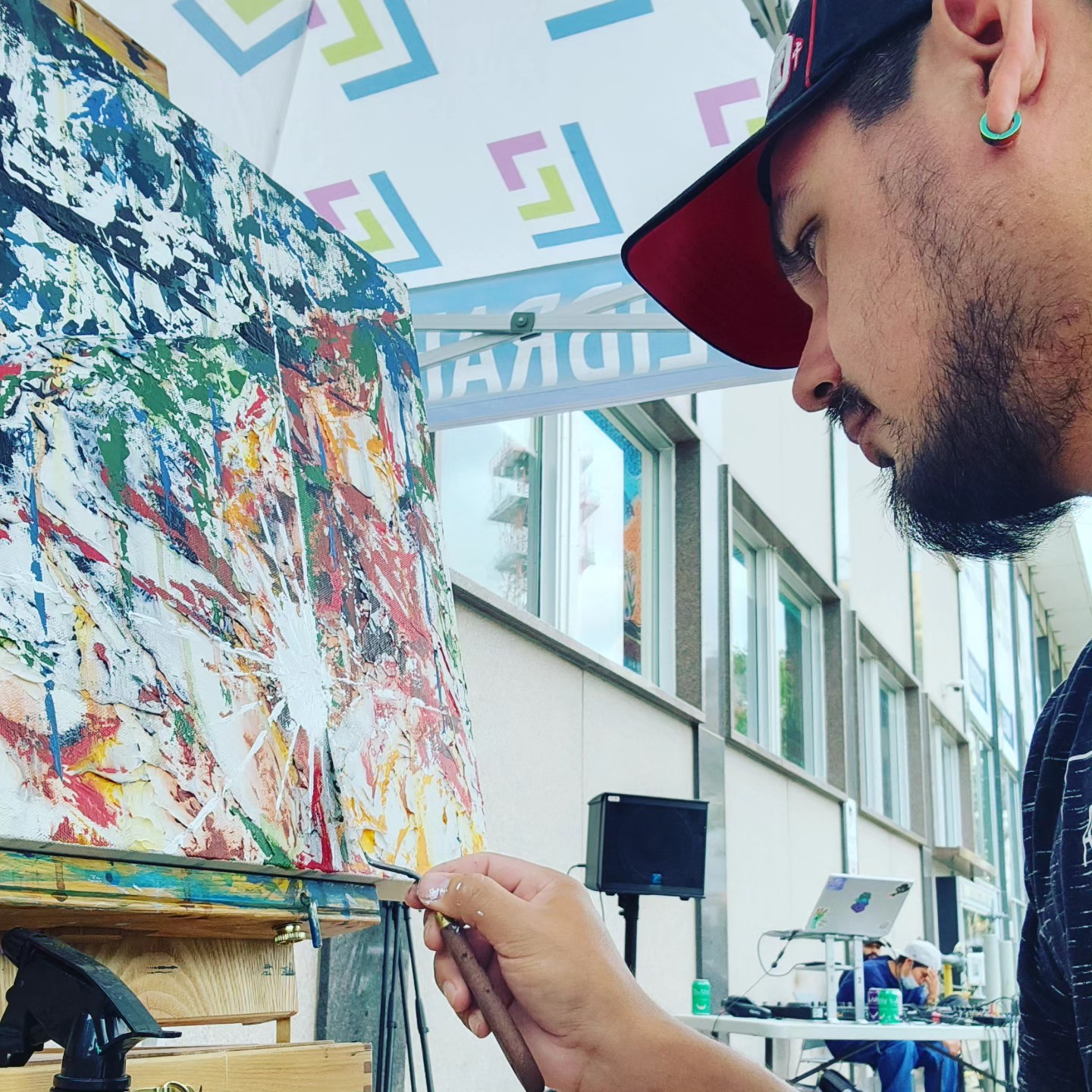 If you look closely at the heads of the parent buffalo, I have created intricate design work that works its way throughout the faces: the buffalo skulls. I carried this idea into the artistic rendition of the buffalo spine on the back of the calf as well.
If you look closely at the heads of the parent buffalo, I have created intricate design work that works its way throughout the faces: the buffalo skulls. I carried this idea into the artistic rendition of the buffalo spine on the back of the calf as well.
I chose to include the bone imagery as it is a very iconic image that has spanned many years, and it’s a staple in Prairie culture as the buffalo and its skull represent many things in Indigenous culture.
Lastly, because the name “Echo Valley” came from the echoing call of an explorer along the river, I incorporated a winding river cutting through the panels, ending at the lake in which the mother and calf are playing; much like the many families coming through the park will do.
Tying the piece together, the English, Dakota and Saulteaux names of the area will all be prominently displayed. I believe that this piece will be a beautiful representation of unity, family, culture and inclusion, and will be a wonderful addition to an already beautifully established getaway.
Follow Harley on his webpage and on his Instagram account!
• Find the newly installed art at Echo Valley Provincial Park at the shores of Pasqua Lake.
• Find out more about Trans Canada Trail’s commitment to reconciliation.


